When valve stem seals are worn, there is increased oil consumption and oily spark plug electrodes
Also a sign of wear is a brief appearance of blue smoke from the exhaust pipe after starting the engine and when braking the engine after a long drive under load
It is possible to replace valve stem seals without removing the cylinder head
To do this, you need to use a compressor to compress air at a pressure of 0.7-1.0 MPa (7-10 kgf / cm 2), supplied to the candle hole through the device (B) in the figure
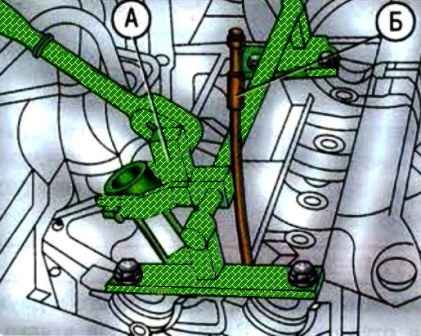
In this case, the piston on the side of the caps to be replaced must be in the TDC position, since on the engines of this car it is impossible to fix the valves through the spark plug hole
If there is no compressor, then you will have to remove the cylinder head
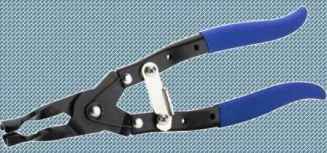

It is desirable to have a pliers or inertial oil seal remover
We prepare the car and install it on a lift
Disconnect the negative battery terminal
Unscrew all the spark plugs
Set the piston of the first cylinder to the TDC position, as described in the article "How to set the TDC of the first cylinder of the Mazda 6 engine"

Remove the cylinder head if we work with the cylinder head removed How to replace the cover and cylinder head gasket Mazda 6
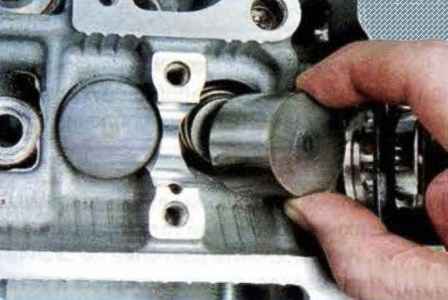
Remove the valve lifters of the cylinder in which we replace the valve stem seals
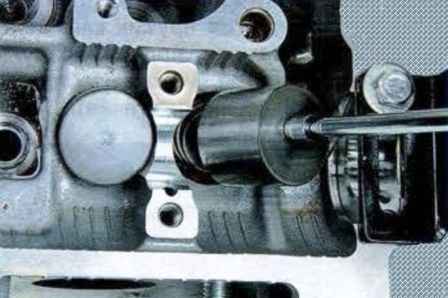
It is convenient to use a magnet when removing pushers
We mark the pushers so as not to be confused during installation
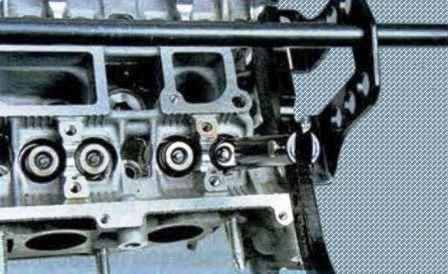
Install the valve spring remover on the second engine cylinder

We compress the spring of one of the valves with the tool
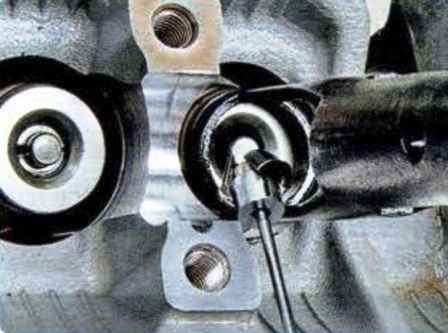
Using tweezers or a magnetized screwdriver, remove two crackers from the spring plate
Then remove the fixture
If we perform work without removing the cylinder head, we do not turn off the compressor until the oil scraper cap is replaced and the springs are installed, otherwise the valve will fall into the cylinder

Remove the spring plate and spring
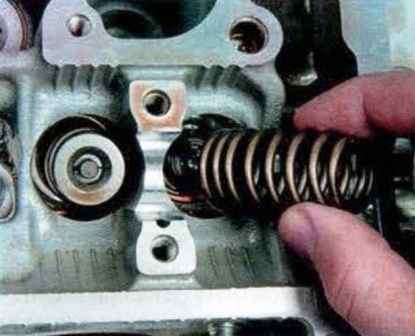
Removed parts must be reinstalled
Compress the valve stem seal from the valve guide
To do this, install the collet of the inertial puller on the cap and sharply hit the collet sleeve with the striker.
Then we sharply hit the handle of the fixture with the striker, thereby compressing the cap from the sleeve
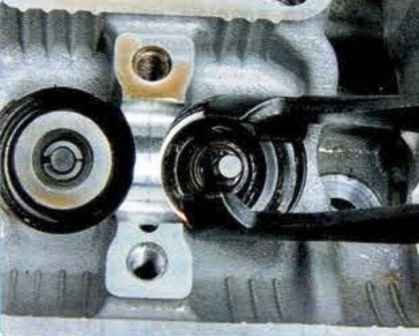
If there is no inertial puller, remove the cap with a tong-type puller or pliers, applying force straight up and without turning the cap so as not to damage the valve guide
Before installing new valve stem seals, we recommend removing the springs from them, otherwise the caps can be damaged when they pass through the grooves for crackers on the valves
If a plastic mounting sleeve is included with the new caps, the springs do not have to be removed.
In this case, put the sleeve on the valve stem.
Original intake valve stem seals are painted green, exhaust valves are brown.
Lubricate the inner surface of the valve stem seal with engine oil and slide the cap over the valve stem to the guide sleeve.
Install the mandrel for pressing the cap. With light blows of the striker on the mandrel, press the cap in until it stops.
In the absence of a special device, you can select a cylindrical mandrel of a suitable diameter and press the cap through it with light hammer blows on the mandrel.
You can use the long head from the toolbox as a mandrel.
You need to select a head with 12 faces and a chamfer inside the hole so that the head contacts the cap in a solid circle.
Remove the valve guide from the valve stem or put a spring on the cap if it was removed.
Install the spring and valve disc in the reverse order of removal.
Install the cotters with the tool so that they fit into the grooves of the valve stem
After installing the crackers, hit the end of the valve with a hammer through the metal rod so that the crackers sit in place.
If the skewed crackers remain unfixed, when the engine is started, the “dry” valve will fall into the cylinder, which will lead to serious engine damage.
Replace the valve stem seals in the same way.
Install the removed parts in the reverse order of removal
After installing the camshafts and the timing chain, check and, if necessary, adjust the clearances in the valve drive





